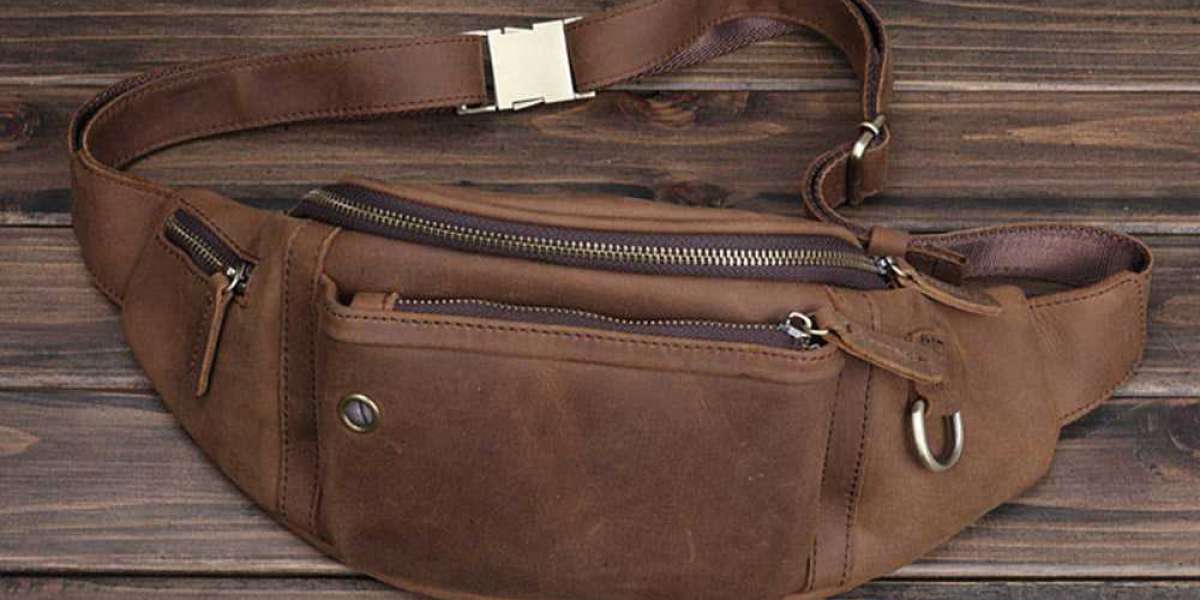Determining the authenticity of a vintage leather fanny pack requires a comprehensive evaluation of several key factors, including material quality, design elements, construction techniques, and historical context. By meticulously examining these aspects, you can confidently assess whether a fanny pack is genuinely vintage.
1. Assessing Material Quality
Authentic vintage leather fanny packs are typically crafted from high-quality, genuine leather that exhibits distinct characteristics over time.
Leather Texture and Patina: Genuine vintage leather develops a unique patina—a sheen that forms on the surface due to aging and use. This patina adds character and is a hallmark of authenticity. The leather should feel supple yet sturdy, with natural variations in texture. In contrast, synthetic materials often lack this depth and may feel uniformly smooth or plasticky.
Scent: Real leather has a distinct, earthy aroma. Synthetic materials or faux leather lack this natural scent and may smell like plastic or chemicals. Taking a moment to smell the material can provide clues about its authenticity.
2. Examining Design and Style Elements
The design of a fanny pack can offer significant insights into its vintage status.
Era-Specific Features:
- 1980s: Fanny packs from this decade often feature bold, vibrant colors and patterns, reflecting the era's fashion trends. Materials may include nylon or leather, with prominent logos or graphic designs.
- 1990s: Designs became more subdued, focusing on practicality and minimalist aesthetics. Neutral tones, streamlined shapes, and functional compartments were common.
Brand Logos and Labels: Authentic vintage fanny packs usually have brand labels sewn inside or on the back. The font, style, and placement of these labels can help determine the era of production. For instance, older labels may feature fonts or logos that have since been updated. Comparing the label to known examples from the brand's history can provide valuable context.
3. Inspecting Construction and Craftsmanship
High-quality craftsmanship is a hallmark of vintage accessories.
Stitching: Examine the stitching for consistency. Vintage items often feature fine, even stitching, indicative of careful handcrafting. Uneven or loose stitches may suggest a lack of authenticity. The thread used should be durable and appropriately matched to the leather in both color and thickness.
Hardware: Pay attention to zippers, buckles, and clasps. Vintage fanny packs often use metal hardware, which may show signs of tarnish or wear but should remain functional. The hardware should feel substantial and durable. Plastic components are less common in older pieces and may indicate a more recent manufacture.
4. Identifying Manufacturer Marks and Serial Numbers
Many vintage pieces include specific identifiers that can aid in authentication.
- Serial Numbers or Date Codes: Some brands include serial numbers or date codes that can be cross-referenced to determine the production date. Familiarize yourself with the brand's identification system to verify authenticity. For example, Louis Vuitton uses date codes that indicate the location and time of production, which can be matched against known records.
5. Evaluating Signs of Wear and Age
Authentic vintage items naturally exhibit signs of aging.
Wear Patterns: Look for natural wear in areas that would experience friction, such as edges and straps. The wear should be consistent with the item's age and usage. Artificial distressing can sometimes be used to mimic age, but it often lacks the subtlety of genuine wear.
Discoloration and Scuffs: Minor discoloration, scuffs, or scratches can indicate genuine age. However, extensive damage may affect the item's value and durability. It's important to distinguish between acceptable signs of wear and damage that compromises the item's integrity.
6. Researching Brand History and Production Details
Understanding the brand's history and product lines can provide context.
Catalogs and Advertisements: Review old catalogs or advertisements to compare designs and verify the fanny pack's authenticity. This can help you identify specific models and their production periods.
Expert Consultation: If uncertain, consult with vintage fashion experts or appraisers who can provide insights based on experience and knowledge. They can offer detailed evaluations and may have access to resources not readily available to the public.
7. Considering Provenance and Documentation
Provenance refers to the item's history of ownership.
Original Receipts or Tags: Possession of original receipts, tags, or packaging can significantly enhance the credibility of a vintage fanny pack. These items provide a documented history that supports authenticity.
Seller Reputation: When purchasing, consider the reputation of the seller. Established vintage dealers are more likely to offer authentic items. Online platforms with authentication services can also provide added assurance.
Conclusion
Authenticating a vintage leather fanny pack requires a comprehensive evaluation of its materials, design, craftsmanship, and historical context. By meticulously examining these aspects, you can confidently determine the authenticity and value of a vintage piece, ensuring a cherished addition to your collection. Remember, patience and attention to detail are key in the authentication process.











